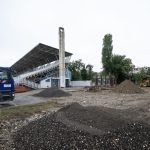GDP growth in the third quarter is forecast at 3.5 percent.
Thanks to the record-setting tourist season and the strengthening of personal consumption, macroeconomists estimate that the growth of the Croatian economy accelerated to 3.5 percent in the third quarter, which would be its highest growth in the last ten years, reports Poslovni.hr on November 26, 2017.
The Central Bureau of Statistics will release the first gross domestic product (GDP) growth estimate for the third quarter next week, and eight macroeconomists who took part in the HINA survey estimated on average that the economy grew by 3.5 percent compared to the last year. Their growth estimates range from 3.3 to 3.9 percent.
That will be the 12th quarter in a row of continuous GDP growth, which will be faster than in the previous one when the economy grew 2.8 percent year-on-year. If the forecast is correct, the 3.5 percent growth would be the quickest since the fourth quarter of 2007, when the economy also grew at this rate.
The macroeconomists say that the economy grew mostly thanks to the strengthening of personal spending, the most significant component of GDP. “The most significant contribution to GDP growth is expected from household spending growth, thanks to the tax reform, tourism and consumer confidence growth, as well as the export of services,” said one of the macroeconomists.
In the third quarter, retail sales jumped by 5.6 percent over the same period last year, thanks to improvement in conditions in the labour market and rising wages after the tax changes implemented at the beginning of the year. According to data, the average net salary in September amounted to 5,958 kunas, which is nominally 5.9 percent or 334 kunas higher than the year before.
Although tourism broke records last year, this year is expected to surpass it. In the first nine months of this year, tourists realised 82 million overnight stays in commercial accommodation facilities, an increase of 11 percent over the same period last year. The number of tourist arrivals increased by 13 percent to 16 million.
The economy was also influenced by the healthy growth of exports, which is mostly a consequence of the growth of the economy in the EU, Croatia’s largest foreign trade partner. In the first nine months of this year, the value of goods exports reached 75.45 billion kunas, which is 13.4 percent more than in the same period last year. At the same time, there was a growth of imports by 10.3 percent to 121 billion kunas, so the foreign trade deficit in the first nine months increased by 2.3 billion kunas or 5.5 percent. “Despite the dynamic growth of commodity exports, we estimate that in the third quarter there was an increase in imports and trade deficit, which will reduce GDP growth,” said one of the macroeconomists.
On the other hand, after a short-term second-quarter drop due to the Agrokor crisis, industrial production growth has rebounded. In the third quarter, the industrial production growth rate reached 2.9 percent on an annual level, while in the first six months of this year it was 2.1 percent.
Macroeconomists believe there that the investment growth continued in the third quarter, but at the slower pace than in the previous one, when gross fixed capital investments increased by 3.2 percent year-on-year. “We estimate that the growth of government spending, slightly above 1.5 percent, continued in the third quarter, while investments continued to grow at modest rates, partly discouraged by uncertainties about Agrokor and due to weaker than expected withdrawal of EU funds,” said one of the economists.
He added that the crisis in Agrokor, the largest Croatian business group, which is under pressure of debts in the amount of about 58 billion kunas, has not yet significantly influenced GDP growth.
In its recent autumn economic forecasts, the European Commission announced that the Croatian economy was resistant to the crisis in Agrokor and therefore increased its GDP growth estimate this year from the previous 2.9 percent to 3.2 percent.
According to the latest survey, eight macroeconomists estimate on average that the GDP growth in 2017 will amount to 3 percent, which is the same as last year, Their growth estimates range from 2.8 to 3.1 percent.
The Croatian National Bank (HNB) has recently increased its GDP growth estimate for this year from 3 to 3.3 percent, while the International Monetary Fund (IMF)’s forecast increased from 2.9 to 3.1 percent.
The government has drafted this year’s budget on the basis of a 3.2 percent GDP growth.
Translated from Poslovni.hr.








